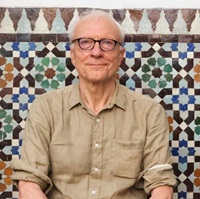
Prof. Dr. Martin van Bruinessen, University of Utrecht, Netherlands
Alevism and the Bektashi Sufi order: similarities, differences, mutual influences
With few exceptions, being an Alevi is a matter of birth. One is born into an Alevi community and cannot easily shed Alevi identity, whether one takes part in the ritual life of the community or not. Ritual leadership is hereditary and vested in holy lineages (ocak) that claim biological descent from saintly ancestors and ultimately from the family of the prophet Muhammad. Alevi communities have distinctive rituals, including the cem. In this respect they resemble Sufi orders. Sufi orders, including the Bektashi order, also constitute communities in a certain sense, but membership is optional. People of any background (provided they are Muslims) can join them through a process of initiation. Like other Sufi orders, the Bektashi order has a set of distinctive rituals (including those that resemble the Alevi cem and its leaders are legitimated by a spiritual genealogy (silsile, a chain of master-disciple relations) that reaches back to the family of the Prophet Muhammad. The principle of heredity seems to be the most important distinction between Alevi communities (including the so-called village Bektashis) and the Bektashi Sufi order. In spite of the similarity in ritual to that of the Alevis, the Bektashi order is more deeply imbedded in the learned tradition of Islam and has produced a rich mystical literature. In Alevi communities there has often been some tension between beliefs and rituals related with local spiritual forces (often handed down from mother to child) on the one hand and theological ideas mediated by the holy lineages, which are more closely related to devotional Shi’ism. Contacts with the Bektashi Sufi order may have contributed to the gradual dissemination of elements from scriptural Islam in Alevi imaginaries. Recent efforts to systematize and standardize Alevi belief and ritual practice are likely to weaken the local religious traditions and bring Alevism closer to the Bektashi Sufi tradition.

Prof. Dr. David Shankland, the Royal Anthropological Institute, UK
What should a course to teach Alevilik look like?
For many years now, we have been discussing the best way to teach Alevilik in schools. However, can we say that we have reached a satisfactory outcome? Perhaps it is usual that we all propose something which matches our experience. In my case, because my introduction to the Alevi way of life was through the Alevi villages and the villagers themselves, I have always thought that it would be a very good idea if we could convey what it means to be an Alevi in the rural setting to the class room. In my short lecture, I will therefore attempt what a sketch of a course might look like. In turn, it will be very useful to discuss whether such a course would in fact meet the needs of today's Alevis in a transnational setting.

Dr. Benjamin Weineck, University of Heidelberg, Germany
Geschichte der Kızılbaş-Aleviten im Osmanischen Reich zwischen dem 16. und dem 18. Jahrhundert
In den letzten Jahren hat die historische Forschung zum Alevitentum große Fortschritte gemacht. Dies war unter anderem über neue Quellenarten und innovative methodologische Zugänge dazu möglich. Daraus hat sich eine lebhafte akademische Debatte entwickelt, obgleich viele zentrale Fragen nach Ursprüngen und Entwicklung der Kızılbaş-Aleviten weiterhin nicht eindeutig geklärt sind. Diese Vorlesung gibt einerseits einen Überblick über die jüngeren Tendenzen in der historischen Forschung zum Alevitentum und führt andererseits in verschiedene Quellenarten und deren Interpretationsmöglichkeiten ein. Lernziel ist dabei vor allem, gemeinsam mit den Studierenden einen differenzierten Zugang zum Komplex alevitischer Geschichte einzuüben, sodass diese in die Lage versetzt werden, selber evidenzbasiert argumentieren zu können, Argumente anderer nachzuvollziehen und kritisch zu hinterfrag

Assoc. Prof. Dr. Cemal Salman, University of Istanbul, Turkey
Alevism as a Unique Mythological Nuance in the Abrahamic Tradition
The fundamental myths of cosmogony, origin, eschatology and cults are important sources for understanding the principles of thought, culture and life of all societies and religious groups. This seminar aims to discuss the similarities and differences between Alevi mythology and the Abrahamic tradition which it developed, through the comparison of Eastern and Western Mythology, examined by Mythologist J. Campbell on how mythological narratives develop and transform over time and between different geographies. Alevism is a faith that was born and developed in the geography and habitus of Western mythology institutionalized by the Abrahamic religions and adopted the major narratives of these religions. However, the myths of Kırklar and Miraç, which present the cosmogony of Alevi mythology, as well as the myths of creation and the first humans, contain narratives and figures that differ from the Western mythology on which the three great Abrahamic religions and especially Islam are based. The multiplication of existence from divine light, unique female figures, the divine superiority of Ali, the representation of the prophet, the understanding of time and space, and ritualistic details are some examples. Alevi beliefs and cultural principles, worship, religious narratives and rituals are largely based on the representation of these founding myths.
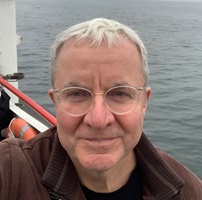
Dr. Martin Greve, Orient Institut Beirut, Lebanon
Der Verlust von Keramet: Atmosphären alevitischer Rituale in Dersim und Istanbul
Während heute in der Türkei und darüber hinaus die meisten alevitischen Rituale (insbesondere Cems) in neu gebauten Cemevis organisiert werden, fanden in Dersim bis in die 1970er Jahre fast alle Rituale in Privathäusern in den Dörfern statt. Obwohl moderne Cemevis nur zu dem einzigen Zweck errichtet wurden, einen geegneten Raum für religiöse Zeremonien zu bieten, erinnern sich ältere Menschen an Cems in einfach Dorfhäusern als deutlich spiritueller, und mit Trance und der Darbietung von Keramet (übernatürlichen Kräften). Es stellt sich die Frage: Wie konnten diese Spiritualität und übernatürliche Kraft in so kurzer Zeit verloren gehen? Basierend auf dem Konzept Atmosphären (Böhme, Schmitz) versucht der Vortrag, die Atmosphäre von Ritualen in den Dörfern zu rekonstruieren und sie mit der heutigen Praxis in Istanbul zu vergleich
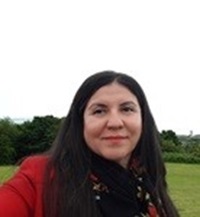
Dr. Filiz Celik, University of Swansea, UK
Being an Alevi Woman in London: Narratives of Women from Mazgirt
Gender is a contested issue for Alevi communities owing to their commitment to advance the presence of women in social, economic, and political arenas yet simultaneously placing their presence in the management of domestic life. This duality presents itself more pronounced when the position of migrant Alevi woman is considered, now away from the rural setting, there are more opportunities and necessities for them to manage aspects of family life outside the home. This lecture will refer to a pilot study conducted in London, UK to understand the challenges and opportunities for migrant Alevi women from Mazgirt, Dersim. This research details how Alevi women integrate into life in the UK and how they relate to their place of origin and their Alevi identity. Beyond the challenges of being a wife, mother and at times unaccounted parts of the labour force, women see themselves as strong agents in passing on their Alevi identity and ensuring the survival of Alevi identity through their children.

Dr. Çiçek İlengiz, Forum Transregionale Studien, Berlin
Negotiating Recognition: Alevi Heritage, Collective Memory, and the Politics of Religious Freedom
This lecture explores the institutionalization of Alevism through the lenses of heritage, collective memory, and religious freedom. It illustrates the centrality of the collective memory of state violence in shaping the divergent political orientations of Turkish, Kurdish, and Arab Alevi communities. Shaped by different historicities, Alevi civil society organizations are divided into two main camps: accommodationists, who advocate integration within the framework of the Directorate of Religious Affairs (Diyanet) in order to achieve institutional recognition, and abolitionists, who call for the dismantling of the Diyanet and advocate institutional separation. Both groups frame their demands for recognition within broader global discourses and legal practices of religious freedom. This talk argues that the leverage of religious freedom has allowed Alevis in Europe to gain recognition as a religious minority. However, this recognition often requires the exclusion of diverse practices and discourses, thereby marginalizing the diverse traditions and experiences of different Alevi communities.
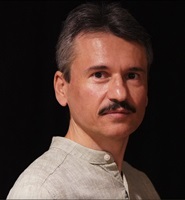
Assoc. Prof. Dr. Urum Ulas Özdemir, University of Istanbul, Turkey
Dimensions of Musical Performance at Alevi Funerals
The visibility of Alevi cemevis has increased significantly since the 2000s as a part of Alevi institutionalization all over the world. In addition to the various religious rituals carried out in cemevis, the issue of how to perform the funeral ritual is one of the most debated issues among Alevis and outside Alevis. The singing of Alevi deyişs [hymns], especially with the bağlama instrument, during funeral ceremonies has caused great tension in recent years, and Alevis have almost split into two separate parts on this issue. In this talk, the issue of performing music in Alevi funeral rituals will be examined with historical and current ethnographic examples. In addition, the issue of musical perception among Alevi communities will be evaluated.
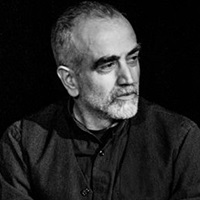
Assoc.Prof. Dr. Abdurrahman Gülbeyaz, University of Nagasaki, Japan
Sprache und Musik im Alevitentum
Das Seminar wird die – zentrale – Rolle von Sprache und Musik im Alevitentum beleuchten. Nach einem kurzen selektiven Blick auf die theoretischen Zugänge zu den Phänomenen Sprache und Musik werden die Spezifika und die wesentliche Rolle von Musik- und Sprachverhalten im Alevitentum diskutiert. Als empirisches Material werden dabei vor Allem Deyiş, die rituellen Lieder, dienen. Anhand einer Auswahl von rituellen Liedern bzw. Gedichten wird einerseits die wandelbare Natur dieser Zeichensysteme und, andererseits der dynamisch-dialektische Link zwischen den beiden dargelegt. Entlang dieses Hauptstranges der Diskussion werden kurze kritische Exkurse über Begrifflichkeiten bzw. soziale Praktiken wie Oralität, Schriftlichkeit, Gott, Macht, Gedächtnis, Identität, Massaker, Vernichtung, Widerstand etc. eingeschaltet. Das Ziel der Sitzung wird sein, den Studierenden einen Einblick in die außergewöhnliche Symbiose von Sprache und Musik im Alevitentum zu vermitteln und die Bedeutung dieser Elemente für den individuellen und kollektiven Seinsmodus der Aleviten aufzuzeigen.

Dr. Hege Irene Markussen, University of Lund, Sweden
Urbanisation and the consequences for Alevi identities. How does life in the gecekondu fit into this?
Over the past three years, I have collected life stories and family histories to highlight aspects of Alevi life that are often overlooked in the dominant narratives of religion and politics in modern Turkey and in the mainstream accounts of Alevi history. In this presentation, I will explore narratives of rural-urban transformations of Alevism and examine Alevi experiences of life in the gecekondu in relation to these narratives. I will discuss how life in gecekondus contributes to the rural-urban transformation of Alevism, questioning whether these settlements represent an urban experience or a continuation of village life. I investigate the unique aspects of living in gecekondus compared to other urban living conditions and considers whether gecekondus facilitated social mobility for Alevis, and if so, what forms of mobility were enabled.

Dr. Hayal Hanoglu, Center for Advanced Studies of Population and Religion, Poland
Gender negotiations of Alevi women
Alevism as a religious and cultural practice, often seen as promoting gender equality and secular values, plays a significant role in shaping the gender identity and empowerment of women. However, there appears to be a divergence between the equality discourse and actual practice. The narratives of women consistently reveal an ongoing struggle against patriarchal norms and gender inequalities within familial, social, and political spheres. On the other hand, Alevi women creating alternative spaces to negotiate their roles promotes more inclusive relationships both within and outside their families. The lecture discusses various dimensions of Alevi women’s experience, including religion, ethnicity, history and politics.
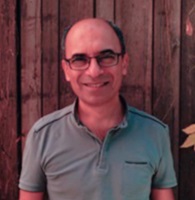
Dr. Halil Can, Forschungsinstitut Gesellschafter Zusammenhalt, Germany
In-/Out-/Transsider der Migration. Alevitische Familien und Zugehörigkeiten in Bewegung und Transformation
Die Anwerbung von ‚Gastarbeitern‘ aus der Türkei nach Deutschland sollte nicht nur temporär sein, sondern wurde auch lange Zeit als eine türkisch-muslimische Migration erzählt, in Deutschland wie auch in der Türkei. Dieses Narrativ von homogenen Nationsstaaten wurde gerade durch die Praxis der Migration brüchig und bröckelte. Exemplarisch hierfür stehen Alevit:innen mit ihrer Migration und Sichtbarwerdung in der Diaspora. Auf der Basis einer Langzeitethnographie soll in diesem Vortrag am Beispiel von alevitischen Familien(biographien) die transgenerationellen Erfahrungen und Identitätsprozesse als In- und Outsider und im Dazwischen als Transsider im transnationalen Migrationsraum in ihren konflikthaften und kreativen Dynamiken und Transformationen vorgestellt werden. Die Familien(angehörigen) treten hierbei entgegen aller Herausforderungen als Akteur*innen hervor, die mit dem Gestalten ihres Lebens auch die (Migrations-)Gesellschaften und Communities, in denen sie leben bzw. mit denen sie verbunden sind, vielfältig prägen und nachhaltig verändern. In ihren transnationalen sozialen Verflechtungsbeziehungen entsteht somit ein transkultureller kreativer Zwischenraum für eine Handlungspraxis und Gesellschaftsperspektive jenseits dominant essentialistischer Normierungen und Grenzziehungen.
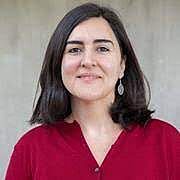
Dr. Kumru Berfin Emre, University of the Arts London,UK
Identifying Kızılbaş in the Turkish press (1923-1946)
The one party period (1923-1946) has been experienced through censorship and control by the Turkish press (Tunçay, 1999; Koçak, 2011). While the oppositional voices have been silenced by the young Republic, pro-government newspapers and magazines have proved useful in consolidating the political power of the Republican elites. The consolidation of political power was essential against uprisings such as Sheikh Said (1925) or in unpenetrated regions such as Dersim (1938). In other words, the consolidation of political power during the one party period had a religious character. The presentation focuses on the changing meaning of the Kızılbaş as a religious category in Turkish press during the one party period. Through content and discourse analyses of newspaper articles, the presentation identifies the variety of meanings attributed to the term Kızılbaş by the period press. Examining the relationship between the political zeitgeist of the period and the news coverage of Kızılbaş, the paper demonstrates that despite the well-established prejudices and the Dersim massacre (1938), the period press has been unable to voice a uniform approach towards Kızılbaş.

Dr. Sinibaldo de Rosa, University of Milan, Italy
Approaching Contemporary Alevi Cultures in Terms of Movement and Performance
Through an analysis of Alevi ritual practices in terms of movement and performance, as well as of their adaptation into the performing arts, in this talk I argue that since the 1980s, the adaptation of Alevi rituals into theatre and dance projects had a pivotal role in the contemporary 'explosion' of Alevi identities in Turkey and internationally. By examining historical changes in the transmission of ritual practices, I approach three interrelated understandings of the term 'movement' in Alevi cultures: first, the crucial role of body movement (semah) within and beyond Alevi rituals; second, its relevance to the construction of Alevism as a 'social movement', bringing together diverse communities that share political aims and ideologies; finally, in terms of its transnational circulation and geographical displacement across nation-states and diasporas.
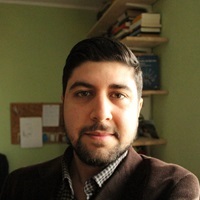
Hasret Tiraz, MA, University of Leipzig, Germany
Lyrische Dichtung als religiöse Institution im Alevitentum
Lyrische Dichtung gehört zu den zentralen religiös-kulturellen Institutionen des Alevitentums. Gedichte, sogenannte „Deyiş" und „Nefes", fungieren sowohl in rituellen als auch in außerrituellen religiösen Kontexten als Medien der Traditionsstiftung und Identitätsbildung. Dieser Vortrag untersucht die alevitische Lyrik unter literaturhistorischen, ästhetischen und theologischen Gesichtspunkten. Zunächst wird die historische Genealogie und Verortung der alevitischen Dichtung im Kontext der türkischsprachigen religiösen Literatur rekapituliert. Darüber hinaus werden charakteristische Merkmale der alevitischen Lyrik untersucht, um sowohl ihre Formen, Sprachverwendung und Stilelemente als auch zentrale Themen und Motive im Zusammenhang gängiger Subgenres zu beschreiben. Der Vortrag behandelt zudem die sozio-kulturelle Trägerschaft der Lyrik, insbesondere die Rolle von Dichtern und Interpreten in der Zirkulation und Rezeption musikalisch dargebotener Gedichte in den religiösen Kontexten der Aleviten. Abschließend werden exemplarisch Textpassagen von einflussreichen Dichterpersönlichkeiten analysiert, um die theologische Bedeutung der Lyrik als Träger zentraler Glaubensinhalte und Ausdruck poetischer Theologie im Alevitentum zu diskutieren.
